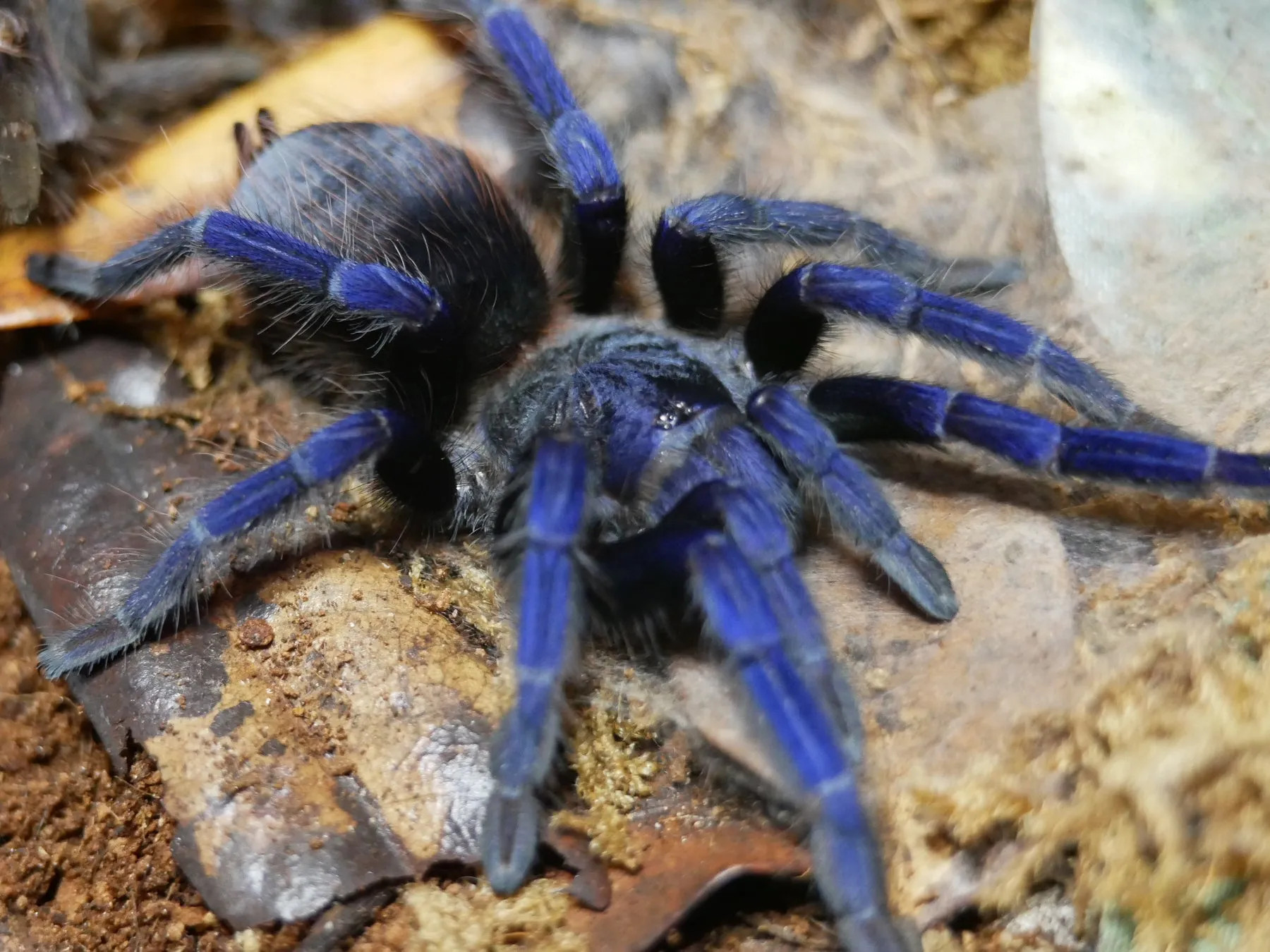Understanding Brazilian Blue Tarantula Temperament
The Brazilian Blue Tarantula (Pterinopelma sazimai) is a striking and sought-after species in the tarantula hobby, known for its vibrant blue coloration. However, potential keepers must understand that, like all tarantulas, their temperament can vary. This guide delves into the secrets behind their aggression levels, providing insights into what makes these spiders tick and how to safely interact with them. Understanding the factors that influence a Brazilian Blue Tarantula’s behavior is crucial for responsible ownership, ensuring both the tarantula’s well-being and the safety of the keeper. Many sources say they’re fairly docile but this can be misleading, depending on numerous factors. Careful observation and a proactive approach to their care are vital. This knowledge helps in creating an environment that minimizes stress and promotes a calm demeanor in your tarantula.
Factors Influencing Aggression
Several elements influence a Brazilian Blue Tarantula’s aggression. These factors can range from environmental conditions to the tarantula’s individual personality. One critical aspect is the tarantula’s age and maturity. Younger tarantulas, or spiderlings, tend to be more skittish and defensive due to their vulnerability. As they mature, they may become more confident, but this isn’t always the case. Genetics also play a role; some tarantulas are naturally more prone to defensive behaviors. Understanding these underlying factors is crucial for predicting and managing a tarantula’s behavior. Furthermore, the keeper’s actions significantly affect the tarantula’s demeanor. Frequent disturbances, improper handling, and inadequate care can elevate stress levels, leading to increased aggression. A well-informed approach to tarantula care is paramount.
Habitat and Environmental Factors
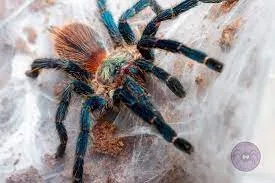
The environment in which a Brazilian Blue Tarantula lives greatly impacts its aggression levels. A well-designed and maintained habitat is essential for a happy and less defensive tarantula. The enclosure should be appropriately sized, offering enough space for the tarantula to move freely and establish a comfortable burrow. The substrate should be deep enough for burrowing, which provides security. The presence of hiding places, such as cork bark or artificial plants, is also crucial, as these give the tarantula a sense of safety and reduce stress. A poorly designed habitat can lead to the tarantula feeling exposed and vulnerable, which can make it more likely to display defensive behaviors. Proper ventilation is also important to maintain air quality, and reduce the risk of respiratory infections.
Temperature and Humidity Effects
Temperature and humidity play critical roles in the well-being and temperament of a Brazilian Blue Tarantula. These tarantulas thrive in a warm, humid environment, similar to their natural habitat. Maintaining the correct temperature range is crucial for their metabolism and overall health. If the temperature is too low, the tarantula may become sluggish and less active, potentially leading to health issues. Conversely, overheating can stress the tarantula and make it more defensive. Humidity is equally important; it aids in molting and prevents dehydration. Low humidity levels can lead to difficulty molting and physical distress. The balance between temperature and humidity significantly impacts the tarantula’s comfort and, by extension, its behavior. Regular monitoring with a thermometer and hygrometer is essential to ensure optimal conditions and a less aggressive tarantula.
Dietary Influences on Behavior
A Brazilian Blue Tarantula’s diet is another significant factor influencing its behavior. Proper nutrition contributes to the tarantula’s overall health and can affect its temperament. A well-fed tarantula is less likely to be stressed or defensive. The diet should consist primarily of appropriately sized insects, such as crickets, roaches, and mealworms. It’s important to avoid overfeeding; an overfed tarantula can become sluggish, which isn’t ideal. Also, ensuring that the prey is gut-loaded with nutritious food will pass these benefits along. Regular feeding schedules, adjusted based on the tarantula’s age and size, are crucial for maintaining a healthy weight and balanced temperament. Providing a varied diet also helps ensure that the tarantula receives all the necessary nutrients for optimal health. A healthy tarantula is generally a less aggressive one.
Feeding Habits and Aggression
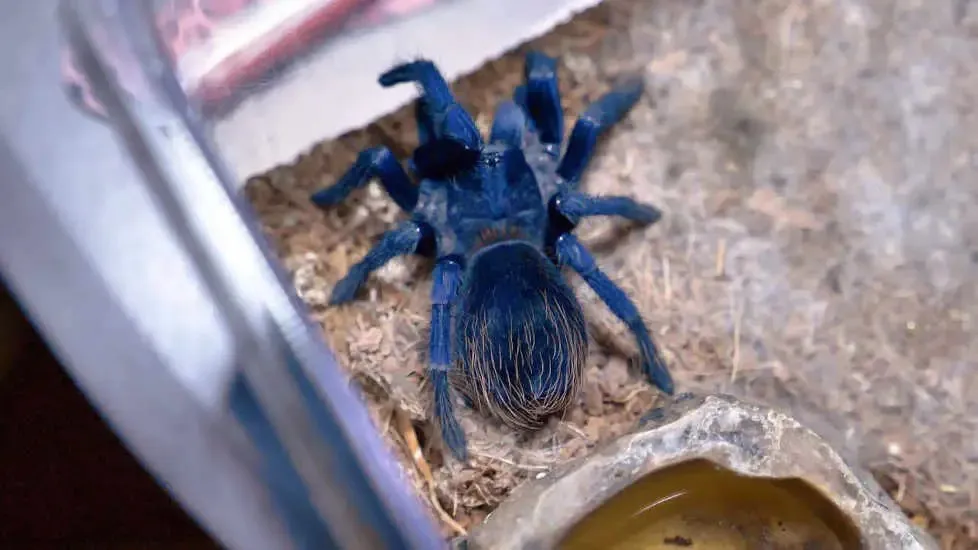
The way a Brazilian Blue Tarantula approaches feeding can also influence its apparent aggression. These tarantulas are ambush predators, and their hunting instincts are naturally triggered by movement. When a prey item is introduced, they may exhibit a quick and aggressive response, which is a natural part of their feeding behavior. It is not necessarily indicative of general aggression. However, if a tarantula is consistently hungry or if the feeding schedule is irregular, it may become more reactive and display feeding-related aggression. Observing the tarantula’s feeding behavior, such as its speed of approach and the intensity of its attack, can help determine its overall temperament and health. Understanding these feeding behaviors helps keepers manage interactions and avoid unnecessary stress for both the tarantula and themselves.
Prey Size and Feeding Frequency
The size of the prey items and the frequency of feeding are critical factors in managing a Brazilian Blue Tarantula’s temperament. Feeding prey that is too large can stress the tarantula, as it may struggle to subdue and consume it. This can result in defensive postures and a general increase in anxiety. Likewise, feeding too infrequently can lead to a hungry, more reactive tarantula. The ideal prey size is generally no larger than the tarantula’s body length. Feeding frequency should be adjusted based on the tarantula’s age, size, and molting cycle. Younger tarantulas require more frequent feeding to support their rapid growth, while adults can be fed less often. Careful observation of the tarantula’s eating habits and body condition will help determine the appropriate prey size and feeding schedule, contributing to a calmer temperament.
Handling and Interaction
Handling a Brazilian Blue Tarantula should be approached with caution and respect for the animal’s boundaries. While some individuals may tolerate brief handling, it’s generally not recommended. Tarantulas are fragile creatures, and dropping them can be fatal. Furthermore, handling can cause stress, which can lead to defensive behaviors like biting or flicking urticating hairs. If handling is necessary, it should be done over a soft surface to minimize the risk of injury. Always wash your hands before and after handling, as tarantulas are sensitive to chemicals on human skin. Even seemingly docile tarantulas can become defensive, so it’s crucial to observe their body language and recognize signs of stress. The best practice is to admire them in their enclosure, providing a safe and stress-free environment. Prioritize the tarantula’s well-being, and interaction can be a treat for the eyes.
Safe Handling Techniques
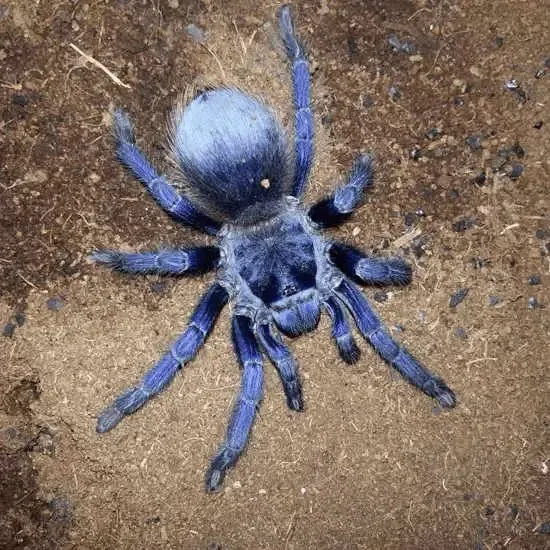
If handling is unavoidable, employing safe techniques is essential. Never grab a tarantula; instead, coax it onto your hand gently. Use a soft, large paintbrush to gently guide the tarantula if it’s hesitant. Always handle the tarantula close to the ground to minimize the fall distance. Be aware of the tarantula’s position and movements, and avoid sudden movements that could startle it. When handling, it’s important to create a calm environment with minimal noise and activity. Consider wearing gloves to protect yourself from potential bites or urticating hairs. It is best to handle the tarantula in a secure area, like a terrarium, in case it runs away. The focus should always be on ensuring the tarantula feels secure. Keep handling sessions brief, and return the tarantula to its enclosure as soon as possible.
Recognizing Defensive Postures
Understanding a Brazilian Blue Tarantula’s defensive postures is vital for preventing bites and minimizing stress for the animal. These tarantulas have several ways of communicating their discomfort. One common defense is a threat posture, where they raise their front legs and fangs, signaling a warning. They may also flick urticating hairs from their abdomen, which can cause skin irritation. Another sign of defensiveness is a rapid retreat into their burrow or a defensive stance against the enclosure wall. It is vital to familiarize yourself with these signals so that you can respond appropriately. If you observe any of these postures, it is best to back away and avoid further interaction. Recognizing these signals allows you to respect the tarantula’s boundaries and avoid unnecessary confrontation. This awareness is a key component of responsible tarantula ownership.
Comparison with Other Tarantula Species
When considering the aggression levels of a Brazilian Blue Tarantula, comparing it to other tarantula species is helpful. Different species exhibit varying degrees of aggression. Some, like the Chaco Golden Knee, are known for being relatively docile, while others, like the Red Headed Tarantula, are known to be more defensive. Compared to some species, Brazilian Blues are considered to be moderately defensive. Their temperament can be influenced by many factors, as outlined. It’s essential to research different species before acquiring one, understanding the temperament of the species you are considering. Every tarantula is an individual, even within a species. There can be noticeable differences in the personalities of each tarantula.
Brazilian Blue vs. Other Tarantulas
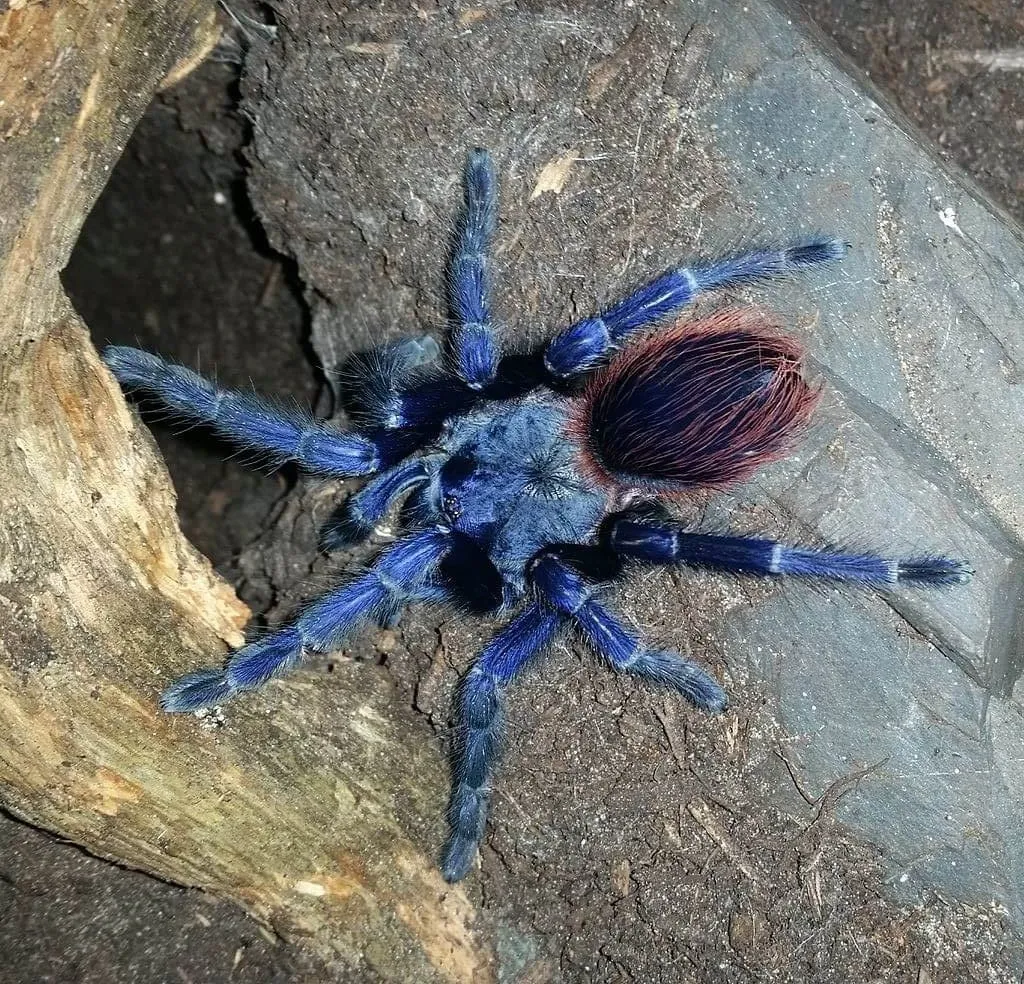
Compared to some popular tarantula species, Brazilian Blues generally fall into the category of being moderately defensive. Species like the Grammostola pulchra (Brazilian Black) are often considered calmer. Others, such as the Nhandu chromatus (Brazilian Giant White Knee), may display similar levels of defensiveness. The key is not to generalize but to understand that each tarantula has its unique personality and that environmental and care factors significantly influence behavior. The Brazilian Blue, with its striking coloration, often attracts both novice and experienced keepers. Proper research and a cautious approach are important, given the species’ potential for defensiveness. By understanding these comparisons, keepers can better assess their ability to provide appropriate care. This enhances the well-being of the tarantula.
Common Misconceptions About Aggression
Several misconceptions exist about Brazilian Blue Tarantula aggression. One common myth is that all tarantulas of this species are inherently aggressive. Another is that their aggression is directly related to their size or age. However, as discussed, numerous factors influence their temperament, including environmental conditions, handling practices, and individual personalities. It is important to dispel these myths by providing accurate information and promoting responsible care. Keepers must understand that a tarantula’s behavior can change over time and that what appears to be aggression might be a defensive response to a perceived threat. Educating yourself on their actual behavior helps in managing expectations and ensuring safe and enjoyable interactions with your tarantula. Focusing on facts about the species, and dispelling myths, is fundamental to the hobby.
